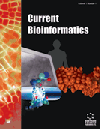- Home
- A-Z Publications
- Current Bioinformatics
- Previous Issues
- Volume 18, Issue 4, 2023
Current Bioinformatics - Volume 18, Issue 4, 2023
Volume 18, Issue 4, 2023
-
-
scTSSR-D: Gene Expression Recovery by Two-side Self-Representation and Dropout Information for scRNA-seq Data
More LessAuthors: Meng Liu, Wenhao Chen, Jianping Zhao, Chunhou Zheng and Feilong GuoBackground: Single-cell RNA sequencing is an advanced technology that makes it possible to unravel cellular heterogeneity and conduct single-cell analysis of gene expression. However, owing to technical defects, many dropout events occur during sequencing, bringing about adverse effects on downstream analysis. Methods: To solve the dropout events existing in single-cell RNA sequencing, we propose an imputation method sc Read More
-
-
-
DEGoldS: A Workflow to Assess the Accuracy of Differential Expression Analysis Pipelines through Gold-standard Construction
More LessBackground: Non-model species lacking public genomic resources have an extra handicap in bioinformatics that could be assisted by parameter tuning and the use of alternative software. Indeed, for RNA-seq-based gene differential expression analysis, parameter tuning could have a strong impact on the final results that should be evaluated. However, the lack of gold-standard datasets with known expression patterns hamp Read More
-
-
-
CCRMDA: MiRNA-disease Association Prediction Based on Cascade Combination Recommendation Method on a Heterogeneous Network
More LessAuthors: Yuan-Lin Ma, Dong-Ling Yu, Ya-Fei Liu and Zu-Guo YuBackground: MicroRNAs (miRNAs) are a class of short and endogenous single-stranded non-coding RNAs, with a length of 21-25nt. Many studies have proved that miRNAs are closely related to human diseases. Many algorithms based on network structure have been proposed to predict potential miRNA-disease associations. Methods: In this work, a cascade combination method based on network topology is developed to Read More
-
-
-
Identification of Potential Biomarkers in Stomach Adenocarcinoma using Machine Learning Approaches
More LessBackground: Stomach adenocarcinoma (STAD) is a common cancer with poor clinical outcomes globally. Due to a lack of early diagnostic markers of disease, the majority of patients are diagnosed at an advanced stage. Objective: The aim of the present study is to provide some new insights into the available biomarkers for patients with STAD using bioinformatics. Methods: RNA-Sequencing and other relevant data of patients Read More
-
-
-
MaxDEL: Accurate and Efficient Calling of Genomic Deletions from Single Molecular Real-time Sequencing Using Integrated Method
More LessAuthors: Xinyu Yu, Yaoxian Lv, Lei Cai and Jingyang GaoBackground: Single-molecule real-time (SMRT) sequencing data are characterized by long read length and high read depth. Compared to next-generation sequencing (NGS), SMRT sequencing data can present more structural variations (SVs) and have greater advantages in calling variation. However, there are high sequencing errors and noises in SMRT sequencing data, which causes inaccuracy in calling SVs from sequencin Read More
-
-
-
Identification of Membrane Protein Types Based Using Hypergraph Neural Network
More LessAuthors: Weizhong Lu, Meiling Qian, Yu Zhang, Hongjie Wu, Yijie Ding, Jiawei Shen, Xiaoyi Chen, Haiou Li and Qiming FuIntroduction: Membrane proteins play an important role in living organisms as one of the main components of biological membranes. The problem in membrane protein classification and prediction is an important topic of membrane proteomics research because the function of proteins can be quickly determined if membrane protein types can be discriminated. Methods: Most current methods to classify membrane proteins are Read More
-
-
-
An Iterative Model for Identifying Essential Proteins Based on the Whole Process Network of Protein Evolution
More LessAuthors: Zhen Zhang, Yaocan Zhu, Hongjing Pei, Xiangyi Wang and Lei WangIntroduction: Essential proteins play important roles in cell growth and regulation. However, due to the high costs and low efficiency of traditional biological experiments to identify essential proteins, in recent years, with the development of high-throughput technologies and bioinformatics, more and more computational models have been proposed to infer key proteins based on Protein-Protein Interaction (PPI) networks. Me Read More
-
Volumes & issues
-
Volume 20 (2025)
-
Volume 19 (2024)
-
Volume 18 (2023)
-
Volume 17 (2022)
-
Volume 16 (2021)
-
Volume 15 (2020)
-
Volume 14 (2019)
-
Volume 13 (2018)
-
Volume 12 (2017)
-
Volume 11 (2016)
-
Volume 10 (2015)
-
Volume 9 (2014)
-
Volume 8 (2013)
-
Volume 7 (2012)
-
Volume 6 (2011)
-
Volume 5 (2010)
-
Volume 4 (2009)
-
Volume 3 (2008)
-
Volume 2 (2007)
-
Volume 1 (2006)
Most Read This Month
Article
content/journals/cbio
Journal
10
5
false
en


